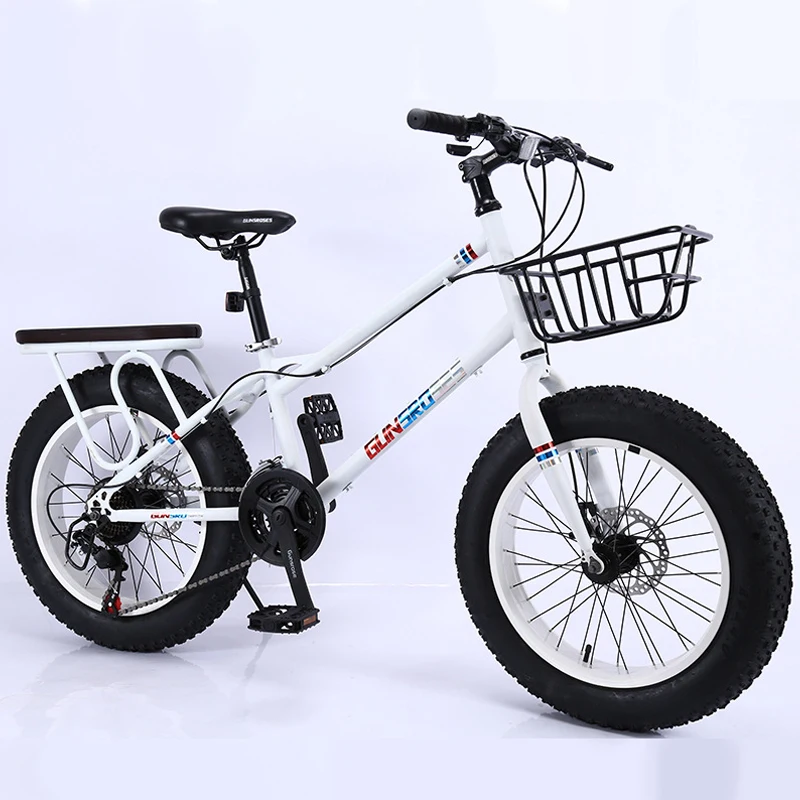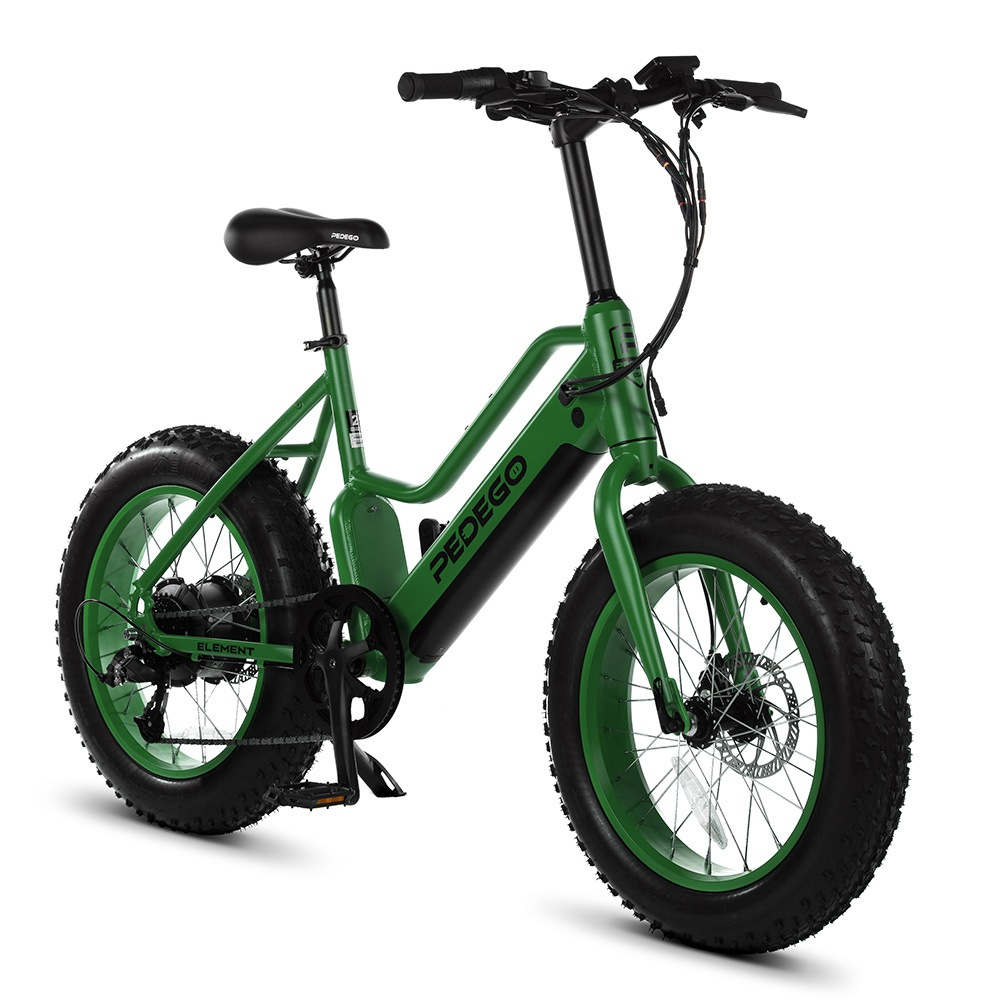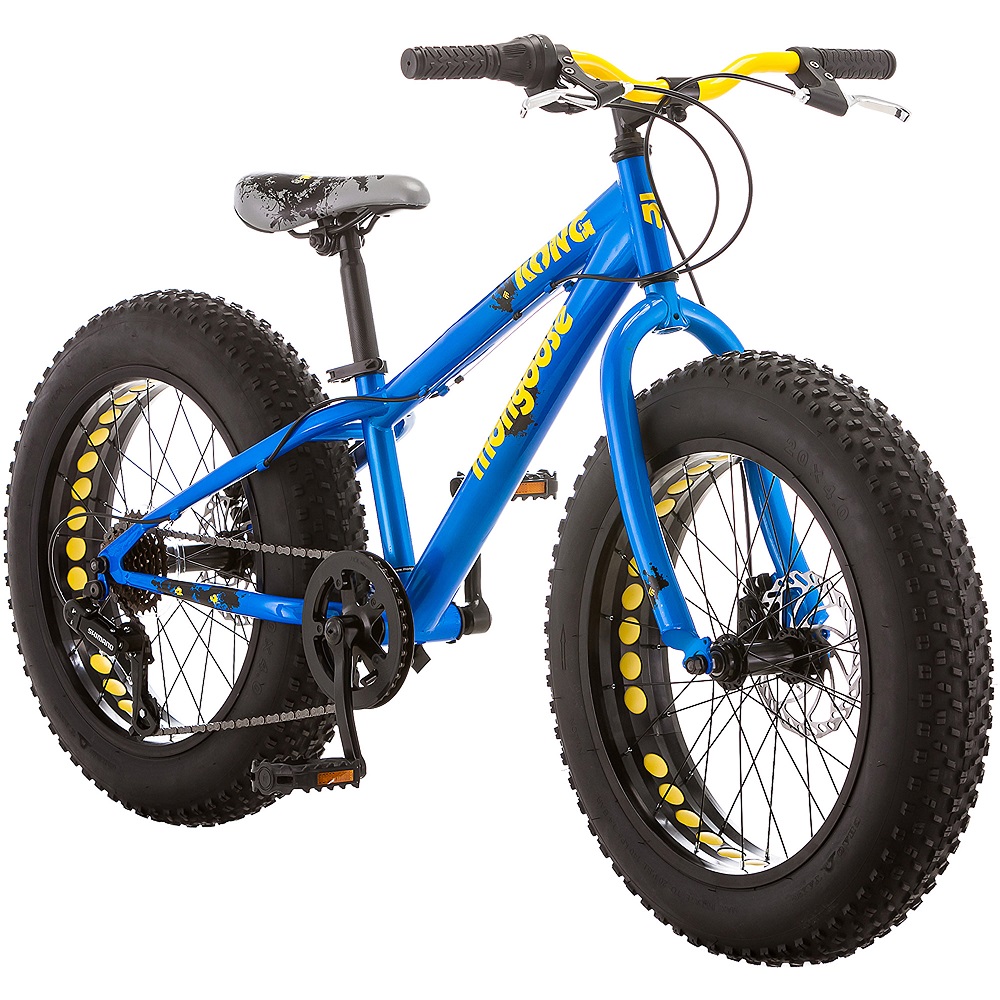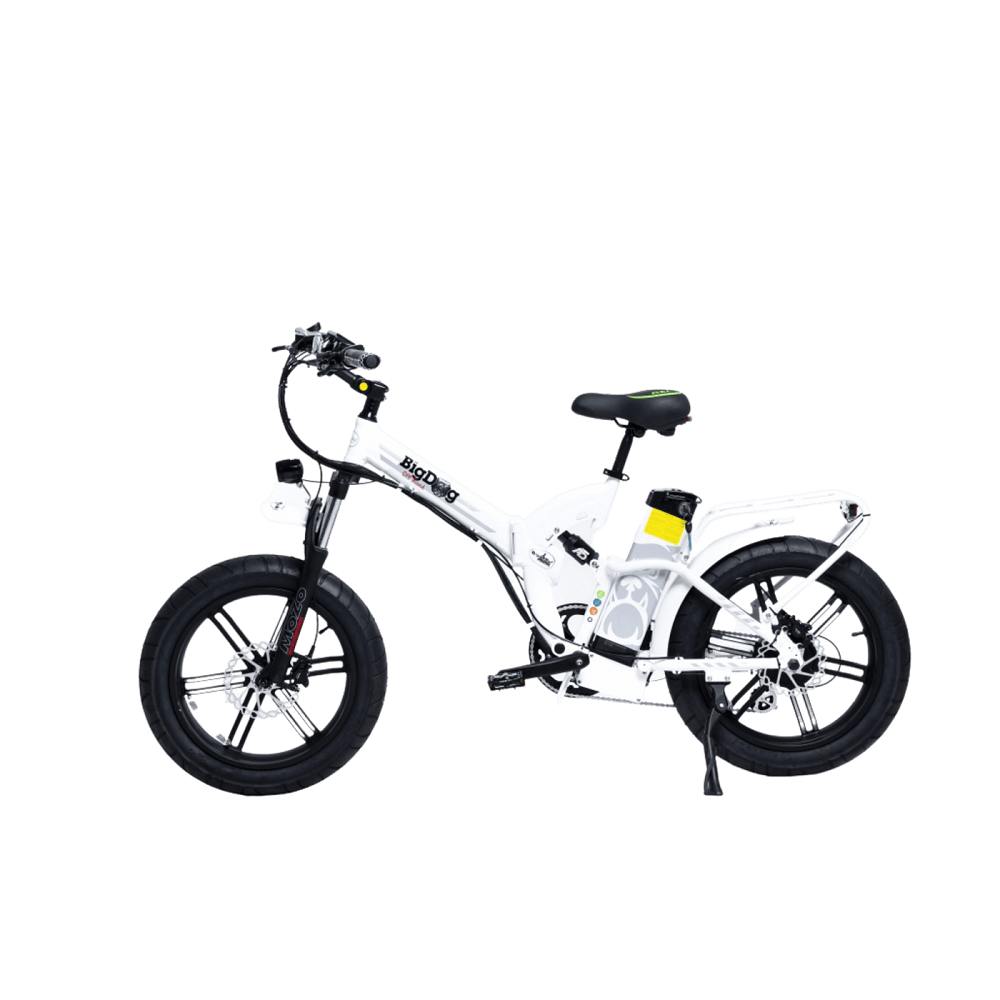In recent years, big tire bicycles, often known as fat bikes, have carved a niche in the cycling world. Their wider tires set them apart from traditional bicycles. These bikes, with tires that can exceed four inches in width, are designed for a variety of terrains. They excel in snow, sand, and rough trails. This article will explore the features, advantages, and growing popularity of big tire bicycles.
What Are Big Tire Bicycles?
Understanding the Big Tire Design
Big tire bicycles have distinct features that make them unique. First, let’s look at the tires. These bikes come equipped with oversized tires that provide better traction. The wider surface area allows for more grip, which is crucial when riding on loose or uneven surfaces. Some fat bikes even feature tires that measure up to 5 inches wide. This size gives riders confidence when tackling challenging terrains.
In addition to the tires, big tire bicycles often have a robust frame. The frames are built to handle the extra stress that comes with larger tires. They are usually made from sturdy materials, making them durable and reliable. Many big tire bikes also feature a low center of gravity, which further enhances stability.
Another characteristic is the bike’s geometry. Fat bikes typically have a relaxed seating position. This helps reduce fatigue during long rides. The handlebars are often higher, allowing for a more upright posture. This makes it easier to control the bike, especially on tricky trails.
The Evolution of Big Tire Bicycles
The origins of big tire bicycles date back to the early 1980s. At that time, a small group of mountain bikers began to modify their bikes. They did this to accommodate larger tires for better traction. In the years that followed, manufacturers recognized the potential of this design. By the 2000s, fat bikes began to gain mainstream attention.
The introduction of technology played a significant role in the evolution of big tire bicycles. Advancements in tire manufacturing allowed for lighter, more flexible materials. This meant that larger tires could be produced without compromising performance. As a result, the popularity of fat biking began to soar.
The rise of social media also contributed to the increased interest in big tire bicycles. Influencers began sharing their biking experiences. They showcased epic adventures across snow-filled landscapes and challenging trails. This visual appeal attracted many new riders. They wanted to experience the thrill of fat biking for themselves.
The Benefits of Riding Big Tire Bicycles
Better Traction in Challenging Conditions
One of the main advantages of big tire bicycles is their ability to provide excellent traction. The wider tires distribute the rider’s weight more evenly. This helps the bike grip surfaces like snow and sand. Traditional bicycles struggle in these conditions, often sinking or sliding.
Riding in snowy conditions can be particularly tough. However, fat bikes make it possible to ride where conventional bikes cannot. The large tires float over the snow rather than getting stuck. This means more opportunities for winter adventures. Similar benefits apply to sandy terrains as well.
Riders can also explore unpaved trails with confidence. Many trails are loose, rocky, or uneven. Wider tires handle these conditions better. They absorb shocks more effectively, providing a smoother ride. Riders experience less jarring than they do on standard bicycles.
Enhanced Comfort for Longer Rides
Another benefit of big tire bicycles is increased comfort during long rides. The larger tires provide a better cushioning effect. This is similar to driving a car with bigger tires; the ride is smoother. Riders encounter fewer bumps and jolts on uneven surfaces.
Comfort is crucial on extended rides, especially for beginners. Even experienced cyclists appreciate this aspect. A comfortable ride can encourage longer adventures. This adds to the overall experience of biking and exploration.
Additionally, the upright posture allowed by these bikes reduces strain on the back and wrists. This makes it easier to ride for extended periods. Riders find it enjoyable rather than exhausting. They can focus on the scenery and fresh air instead of discomfort.
Popularity and Trends in Big Tire Bicycles
Fat Bikes: A Growing Community
The popularity of big tire bicycles has led to a vibrant community of enthusiasts. Fat biking events and races have become common. These gatherings attract riders of all skill levels. They bring together people who share a passion for adventure and nature.
Local bike shops often host group rides. These events allow riders to test new equipment and learn from each other. Sharing knowledge enhances the biking experience. Riders can discover new trails and locations, expanding their horizons.
Social media platforms also play a role in the growing interest. Riders share their journeys with hashtags related to fat biking. YouTube channels dedicated to fat biking inspire even more people to join the movement. The visual aspect of these videos captures the spectacular landscapes and thrilling rides.
Benefits of Joining a Fat Biking Community
Being part of a fat biking community can significantly enrich the riding experience. Riders gain valuable insights from experienced bikers. They can learn about maintenance tips and the best gear available. This knowledge can boost confidence for newcomers.
Moreover, riding with others fosters camaraderie. The shared experiences create lasting friendships. Many riders form tight-knit groups that regularly explore new trails together. This social aspect makes learning how to navigate challenging terrains fun and enjoyable.
A community also provides a support system. Beginners can find mentors among experienced riders. They can seek advice on the best beginner-friendly trails. This encourages more people to participate and builds a supportive environment.
Choosing the Right Big Tire Bicycle
Factors to Consider When Shopping
When considering a big tire bicycle, various factors come into play. First, you need to assess the intended use. If you plan to ride primarily on snow or sand, certain tires perform better than others. Look for tires specifically designed for those conditions.
Another essential factor is frame size and material. Make sure you select a bike that fits your height and weight. A bike that feels good to ride enhances the experience. Aluminum frames are popular for being lightweight, while steel frames offer durability.
Additionally, think about the bike’s components. Gear systems, brake types, and even handlebar preferences can affect performance and comfort. For instance, hydraulic disc brakes provide better stopping power, which can be crucial when riding on steep or slippery surfaces.
Trying Before You Buy
Once you’ve narrowed down your options, it’s wise to test ride a few models. Many local bike shops offer demo days. These events allow riders to try various bikes before making a purchase. Pay attention to how the bike feels during the ride.
Testing the bike on different terrains is beneficial. Analyze how it handles in snow, sand, or rocky trails. A properly fitting bike can make a significant difference in comfort and performance.
When you feel confident about your choice, it’s essential to think about accessories. Items like helmets, lights, and hydration systems enhance the overall biking experience. Investing in quality gear often pays off in the long run.
Maintenance Tips for Big Tire Bicycles
Keeping Your Fat Bike in Top Shape
Maintaining a big tire bicycle is crucial for longevity and performance. Regular cleaning is the first step. After each ride, especially in muddy or snowy conditions, clean the tires and frame. This helps prevent dirt buildup and rust.
Pay attention to the tires. Regularly check air pressure and tread wear. Low tire pressure can reduce traction and performance. It’s vital to ensure your tires are in good shape before heading out for a ride.
Bearings and brakes also require periodic checks. Each season, inspect the bike’s components for wear and tear. Replace parts as necessary to avoid issues down the line. Investing time in maintenance will lead to a smoother riding experience.
Snow and Sand Care
When it comes to maintaining a big tire bicycle, specific care is needed for different terrains. For snowy rides, removing snow and ice from tires after each use is crucial. This helps preserve the tire’s integrity and ensures optimal performance.
Rides on sandy beaches come with their own challenges. Sand can infiltrate small gaps in the bike’s components. Thus, cleaning the bike thoroughly is essential after each ride. Take special care of the drivetrain and ensure it remains lubricated.
Investing in quality maintenance products is beneficial. Lubricants designed for extreme weather and conditions make a noticeable difference. Arm yourself with the right tools to ensure your bike remains in excellent shape.
The Future of Big Tire Bicycles
Innovations on the Horizon
The world of big tire bicycles continues to evolve. Manufacturers are exploring new materials and designs. Innovations in tire technology aim to improve performance in adverse conditions. Companies are focused on creating lighter, more robust tires that retain traction.
Electric fat bikes are also on the rise. These bikes combine the benefits of big tires with electric assistance. Riders can tackle even the toughest trails with ease. This opens up fat biking to a broader audience, including those new to cycling.
New technologies also help enhance rider safety. Improved lighting and reflective gear are essential for night or low-visibility rides. As big tire bicycles gain popularity, advancements in safety technology will likely follow suit.
Building Sustainability into the Industry
With the rise in environmental consciousness, manufacturers are focusing on sustainability. Many are exploring eco-friendly materials and production processes. This aligns with a broader movement toward responsible biking.
Sustainable practices benefit not only the environment but also local biking communities. Many businesses now partner with conservation organizations. They work together to preserve trails and outdoor spaces, ensuring that future generations can enjoy these areas.
Riders are becoming more aware of their environmental impact. They advocate for sustainable practices in the cycling industry. This awareness will likely drive the future of big tire bicycles towards greener technologies and practices.
Conclusion
Big tire bicycles represent a significant evolution in the world of cycling. They offer riders the freedom to explore a diverse range of terrains while providing comfort and stability. For many, fat biking is not just about the ride; it’s about the experiences and friendships formed along the way.
As communities continue to grow and new technology emerges, the future looks bright for big tire bicycles. Whether you’re a seasoned cyclist or just starting, there’s never been a better time to join this exciting and adventurous sport. Embrace the thrill of riding a big tire bicycle and discover what the great outdoors has to offer.





